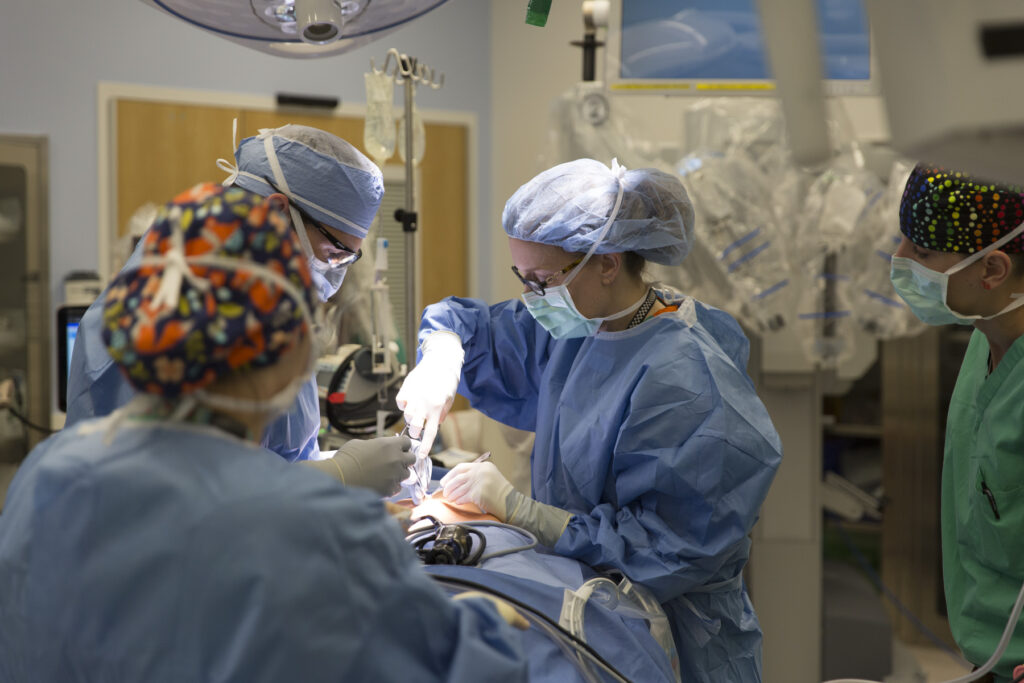Treating Pediatric Melanoma: Ultrasound Surveillance vs. Completion Lymph Node Dissection for Sentinel Node Positive Patients
Treating Pediatric Melanoma: Ultrasound Surveillance vs. Completion Lymph Node Dissection for Sentinel Node Positive Patients https://pediatricsnationwide.org/wp-content/uploads/2023/10/022618BS0026G-1024x683.jpg 1024 683 Pam Georgiana Pam Georgiana https://pediatricsnationwide.org/wp-content/uploads/2023/07/May-2023.jpg
Treatments for pediatric melanoma are usually based on adult studies, but increasing recognition of the differences between pediatric and adult melanoma could change that.
Pediatric melanoma is rare in the United States. The Skin Cancer Foundation reports that about 400 children under 20 years old are diagnosed with melanoma each year in the United States. Because there are so few pediatric cases, treatment is often based on what doctors have learned about managing adult melanoma.
Two courses of action for adults with Stage 3 melanoma, which is when tumor cells are identified in the sentinel lymph nodes (SLN), include:
- Observation through nodal basin ultrasound surveillance every three months
- Completion lymph node dissection
Ultrasound is a noninvasive technique to monitor lymph nodes for worrisome change and is much less invasive than performing a completion lymph node dissection or removing all lymph nodes at risk of containing cancer cells. Completion lymph node dissection also has a high risk of lymphedema (chronic limb swelling) and infection.
According to Jennifer Aldrink, MD, director of surgical oncology at Nationwide Children’s Hospital and professor of clinical surgery at The Ohio State University, two groundbreaking clinical trials showed that there was only a slightly higher risk of cancer returning to lymph nodes, and no difference in overall survival rate when using the less invasive ultrasound surveillance in adults. This has now become the standard of care for SLN-positive melanoma.
Because there is increasing evidence that important clinical and biological differences exist between pediatric and adult melanoma, Dr. Aldrink wanted to study whether close surveillance ultrasound is a reasonable and safe option for children with sentinel lymph node positive melanoma, rather than completion lymph node dissection.
“Melanoma in a child has a subtly different genomic landscape compared to adults which may reflect its clinical behavior. In addition, we know that children and adolescents have a higher rate of nodal metastases when compared to adults, but superior survival for equal disease stages. Therefore, we wanted to test whether young patients would respond to treatment similarly,” Dr. Aldrink says.
Dr. Aldrink and her team tested the theory by retrospectively reviewing 252 pediatric cases from 14 pediatric hospitals in the Pediatric Surgical Oncology Research Collaborative, of which Dr. Aldrink is a founding member. The study was recently published in the Annals of Surgery.
“We found that the majority of patients with a positive SLN were safely observed with serial nodal ultrasound, with no difference in overall survival or recurrence rates between the two groups. Recurrence, when it occurred, was more reflective of the stage of disease and aggressiveness of the biology,” Dr. Aldrink summarizes.
In fact, only 8.9% of the patients in this cohort experienced disease recurrence. There was no difference in recurrence (11.1% vs. 18.8%; P=0.28) or death (2.2% vs 9.7%; P=0.36) for those who underwent ultrasound surveillance vs completion lymph node dissection, respectively.
Pediatric surgeons and oncologists now have data to support close surveillance ultrasound as a viable option for their patients with microscopically positive SLN.
“We recommend patients undergo ultrasound every three to four months for two years and every six months for three years after that. Once patients meet that five-year mark with no cancer recurrence, we release them from oncology care, but they require close dermatological follow up lifelong,” Dr. Aldrink says.
Dr. Aldrink hopes that this study will be the impetus for more studies into the genetic makeup of pediatric melanomas through the Nationwide Children’s Cancer Predisposition Team and the Institute of Genomic Medicine, as well as the Children’s Oncology Group Molecular Characterization Initiative which will characterize pediatric lesions for specific and potentially targetable genetic mutations and alterations.
Meanwhile, Dr. Aldrink wants to make sure pediatricians understand that, while rare, melanoma still occurs in children and adolescents. “There is active national research to treat patients with pediatric melanoma more accurately and with less morbidity. When caught early, pediatric melanoma is a very treatable disease, and patients do very well long-term,” she summarizes.
References:
Scoville SD, Stanek JR, Rinehardt H, et al. Comparison of Outcomes Between Surveillance Ultrasound and Completion Lymph Node Dissection in Children and Adolescents with Sentinel Lymph Node Positive Cutaneous Melanoma. Annals of Surgery. 24 Jul 2023;10.1097/SLA.0000000000006022.
About the author
Pam Georgiana is a brand marketing professional and writer located in Bexley, Ohio. She believes that words bind us together as humans and that the best stories remind us of our humanity. She specialized in telling engaging stories for healthcare, B2B services, and nonprofits using classic storytelling techniques. Pam has earned an MBA in Marketing from Capital University in Columbus, Ohio.
- Pam Georgianahttps://pediatricsnationwide.org/author/pam-georgiana/
- Pam Georgianahttps://pediatricsnationwide.org/author/pam-georgiana/
- Pam Georgianahttps://pediatricsnationwide.org/author/pam-georgiana/
- Pam Georgianahttps://pediatricsnationwide.org/author/pam-georgiana/
- Posted In:
- Clinical Updates
- In Brief
- Research










